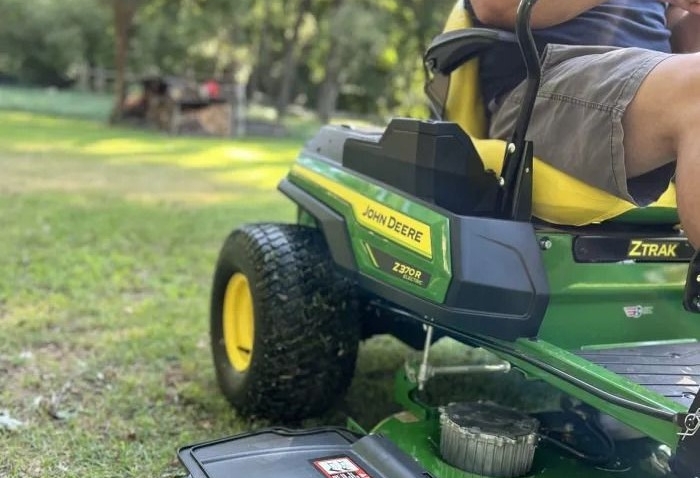
How to Make a Lawnmower Faster: Speed Boost
Introduction to Lawnmower Racing
Lawnmower racing began as a fun way to turn ordinary mowers into fast, competitive machines. Today, it has evolved into an organized sport with its own set of rules and standardized safety measures. Enthusiasts take pride in transforming everyday garden equipment into high-speed racers capable of reaching up to 50MPH or more.

But lawn mower racing is not as simple as cranking up the throttle on a stock mower. It requires careful modification and upgrading of various components. This includes the engine, transmission, frame, and brakes—essentially building a small racer that can withstand the rigors of the dirt track while keeping safety paramount. That’s why understanding how to make a lawnmower faster involves a comprehensive approach, touching everything from initial concept to the satisfying rush of competition day.
In this blog, we’ll explore the steps needed to convert a standard lawnmower into a speed demon while adhering firmly to safety protocols. Prepare to dive into the world of modified engines, reinforced frames, precision steering systems, high-performance brakes, and meticulous final assemblies. Whether a seasoned racer or a hobbyist, our insights will help elevate your lawnmower racing experience to a thrilling new level. Ready to hit the track with a lawnmower like no other? Let’s get you up to speed with the transformation process.
Evaluating Safety Measures
Safety should always be your first concern when considering how to make a lawnmower faster. While the thrill of racing is tempting, the modifications make these machines operate well beyond their original design. This increases the risk of accidents and injuries. Therefore, it’s imperative to adopt comprehensive safety measures before and during the modification process.
Firstly, ensure that the frame, brakes, and steering of your racing lawnmower are reinforced to handle higher speeds. Strong materials and proper assembly are crucial to prevent breakdowns at high velocity. Also, invest in a quality helmet, gloves, boots, and long pants to protect yourself during races.
Next, familiarize yourself with the American Racing Mower Association (ARMA) guidelines or those of another reputable organization. Follow their rules for safety equipment, which may include specific requirements for things like tether switches that shut down your mower if you fall off. Racing on rough terrain means a higher chance of tipping over, making this equipment vital.
Another essential component is the braking system. Upgraded brakes designed for the speeds you’ll be achieving are necessary. They’ll help you avoid crashes and maintain control of your racer.
Remember, no matter how eager you are to speed up your lawnmower, compromising on safety can lead to dire consequences. All modifications should enhance both the performance and the protection offered by your machine!
Selecting the Right Mower for Modification
Choosing a suitable candidate for your high-speed lawnmower project is pivotal. Here’s how to pick the right one:
- Start with the Frame: Older mowers often have tubular or square steel frames. These provide a sturdy base for modifications and can handle the added stress of higher speeds.
- Size Matters: Smaller mowers are preferable because of their lighter weight. This can lead to better power-to-weight ratios, essential for speed.
- Engine Compatibility: Ensure the mower’s design can accommodate a more powerful engine. Modifications might be necessary, so a flexible design is a plus.
- Transmission Type: A mower with a simple transmission is easier to modify. Avoid complex hydrostatic transmissions, as they are harder to work with.
- Availability of Parts: Choose a mower that has readily available parts. This will make the modification process smoother and repairs easier down the road.
- Consider the Age: While vintage mowers are robust, they might need more work. Newer models may require fewer modifications but check their build quality.
- Research: Read forums, join lawnmower racing communities, and learn from experienced modders. Their insights are valuable in selecting the right mower for the job.
Remember, the goal is to find a balance between a solid foundation and the potential for speed enhancements. With the right mower, your need for speed will soon transition from dream to reality.
Disassembling and Stripping the Mower
Before boosting your lawnmower’s speed, you need to strip it down. This means taking apart the mower to the bare bones, ensuring a clean slate for modifications. Here are the steps to do it safely and effectively:
- Safety First: Disconnect the spark plug wire to prevent accidental engine starts.
- Drain Fluids: Empty the fuel tank and oil to prevent spills and fires. Store these safely.
- Remove Components: Start by taking off easily detachable parts like the mower deck, seat, and any plastic covers.
- Frame Inspection: Check the frame for any rust or weak points that might need addressing before you go further.
- Label Parts: As you remove parts, keep them organized. Label them to avoid confusion during reassembly.
Disassembling your mower is a critical step in the modification process. It allows you to identify the parts that need upgrades and those that are good to maintain as is. With your mower stripped, you’re ready to dive into the world of engine mods and speed enhancements! Remember, be methodical and document your steps for a smoother rebuild.

Engine Modification: Increasing Horsepower and Speed
To make your lawnmower faster, upgrading the engine is essential. This section guides you through increasing horsepower and speed safely and effectively.
Choose the Right Engine
Select a powerful engine that fits your lawnmower frame. A larger engine typically means more speed.
Upgrade Engine Components
Opt for high-performance parts like carburetors, air filters, and exhausts. These improve airflow and power.
Remove the Governor
The governor limits engine speed. Remove it cautiously to unlock higher RPMs, but consider the risks.
Strengthen Internal Parts
Replace stock internals with stronger counterparts. Think billet rods and forged pistons for durability at high speeds.
Adjust Fuel Mixture
Tune the carburetor for a richer fuel mixture. More fuel can mean more power, if balanced properly.
Regular Maintenance
Keep your upgraded engine well-maintained. Regular oil changes and part checks are crucial for peak performance.
By following these steps, your mower’s engine will be ready to tackle higher speeds. Safety remains a top priority, so upgrade with care. Get ready for a faster, more thrilling ride!
Frame and Chassis Reinforcement Tips
To prevent your high-speed lawnmower from falling apart, reinforcing the frame and chassis is crucial. Here’s how to do it effectively:
Choose the Right Materials
Use strong materials like square steel tubing for reinforcement. It’s sturdy and simple to work with.
Reinforce Critical Points
Focus on areas that bear the most stress. Weld additional supports where the engine and transmission sit.
Check for Flex and Weakness
After adding reinforcements, inspect the entire frame. Look for any signs of bending or weakness.
Use Proper Welding Techniques
Ensure all welding is done correctly. Poor welds can lead to structural failures at high speeds.
Keep the Mower’s Balance
Make sure the weight is distributed evenly. This aids in stability and control during races.
By following these tips, you’ll have a solid foundation capable of handling increased speeds safely.
Upgrading the Steering System for Improved Control
Improving control with steering upgrades is next. Good steering ensures safety and better handling at high speeds. Here are steps to upgrade your mower’s steering system:
Select the Correct Steering Components
Pick high-quality components for your mower’s new steering system. Quality parts reduce wear and enhance control.
Design a Direct Steering Setup
A solid link between the steering wheel and wheels is important. It provides precise control.
Consider the Wheel Alignment
Proper wheel alignment impacts your mower’s handling. Adjust camber and caster for optimal performance.
Install Sturdy Spindles and Tie Rods
Strong spindles and tie rods prevent bending or breaking. Look for robust materials and build.
Adjust Steering Sensitivity
Set up your steering for the right amount of responsiveness. This can improve cornering on tracks.
Test and Refine Steering Geometry
After installation, test-drive your mower. Fine-tune the steering for balance and control.
By upgrading the steering system, you prepare your lawnmower for faster, safer racing action.
Transmission and Drive System Enhancements
Enhancing your lawnmower’s transmission and drive system is crucial for faster speeds. Here’s how to boost performance:
Choose the Right Transmission
A simple, sturdy transmission is best for speed modifications. Look for a model that can handle increased power.
Install a High-Performance Clutch
A performance clutch will manage power better and improve acceleration. Opt for a clutch designed for racing.
Upgrade the Drive System
Switch to a heavier-duty drive system. Go for larger chains and sprockets that can handle more power.
Align Sprockets Carefully
Proper alignment is key to reducing wear and tear. Use a straight edge to align sprockets perfectly.
Install Tensioners for Chain Stability
Add chain tensioners to keep chains tight. This prevents slipping and improves power delivery.
Select Durable Drive Components
Use high-quality materials for all drive parts. This will ensure they last longer at higher speeds.
Through these transmission and drive system enhancements, your lawnmower will be better geared for high-speed racing. Good alignment, chain tension, and robust components are your allies in achieving greater velocity.
Brake System Upgrades for Better Stopping Power
When making a lawnmower faster, don’t forget brake upgrades. Better brakes mean safer stops at high speeds. Follow these steps to upgrade your mower’s brakes.
Choose Quality Brakes
Pick brakes made for racing. They handle high speeds better.
Swap for Disc Brakes
Change from drum to disc brakes if possible. They offer better stopping power.
Install a Reliable Master Cylinder
A good master cylinder improves brake response. Get a high-quality one.
Use Heavy-Duty Brake Lines
Strong brake lines resist wear. They keep braking consistent.
Properly Space the Caliper and Rotor
Ensure the caliper and rotor alignment is perfect. This prevents uneven wear.
Bleed the Brakes Regularly
Air in lines reduces brake effectiveness. Bleed your brakes for a firm pedal.
Upgraded brakes will increase your safety on the track. Make sure they’re the best quality you can get.
Final Assembly: Putting It All Together
After upgrading each component, it’s time for the final assembly of your faster lawnmower. Follow these steps for a successful build:
- Begin With the Frame: Start by securing the engine onto the reinforced frame. Ensure all bolts are tightened correctly for safety.
- Install Drive Components: Attach the transmission, clutch, and drive system. Double-check the alignment of all sprockets and install chain tensioners for stability.
- Fit the Steering System: Set up the upgraded steering components. Make sure the steering is responsive and properly aligned.
- Assemble Brake System: Install the new brakes, ensuring the caliper and rotor are spaced correctly. Test the brake response multiple times.
- Connect Electrical Parts: Safely wire up any electrical components like the ignition switch and safety tether.
- Mount Seat and Controls: Place the seat at the correct height for comfort and safety. Adjust the control levers within easy reach.
- Reattach Wheels: Put on the wheels and ensure they’re secure. Check that the tires are appropriate for racing.
- Perform a Thorough Inspection: Go over every part of the mower to check for loose bolts or misalignments.
- Test Static Functions: Before starting the engine, ensure all controls function properly while the mower is stationary.
Complete these steps with care to ensure your mower is race-ready and safe to operate at high speeds. With diligent work, you now have a speed-boosted lawnmower tailored for competition.
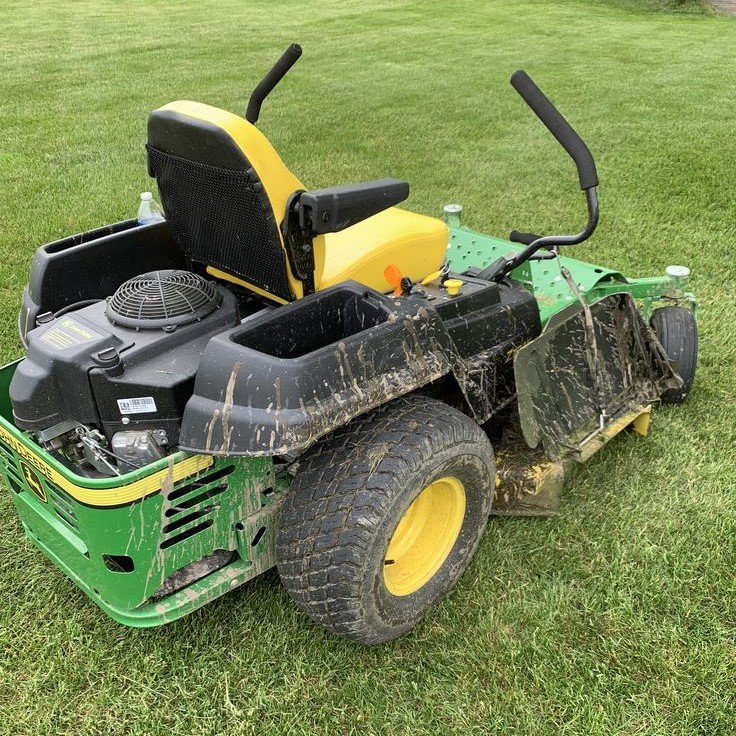
Testing and Adjusting Your Modified Mower
After all the upgrades and modifications, testing your lawnmower is the final step to ensure it’s race-ready. Here’s how to effectively test and adjust your modified mower for optimum performance:
Start with a Dry Run
Before introducing fuel, perform a dry run to check mechanical functions. Ensure the steering is precise and the brakes are responsive.
Gradual Engine Tests
Add fuel and run the engine at low speeds initially. Listen for any unusual noises that may indicate issues.
Test Drive on a Safe Track
Conduct a test drive in a controlled environment. Monitor the mower’s handling, acceleration, and braking.
Make Adjustments as Necessary
Based on test results, adjust the engine settings, alignment, and controls. Continue tweaking until the mower operates smoothly.
Check for Any Loose Parts
After running the mower, re-inspect for any parts that may have come loose. Security is essential for racer safety.
Fine-Tune for Handling
Handling is critical at high speeds. Ensure the mower turns effectively at various speeds and remains stable.
Remember, the aim is a balanced, fast, and safe machine. Take your time with testing and adjustments to reach peak performance for your lawnmower racer.
Maintaining Your High-Speed Lawnmower
Maintaining a high-speed lawnmower is vital for longevity and performance. Here are key maintenance tips:
Regular Engine Check-Ups
Ensure your engine runs smoothly with regular check-ups. Change the oil and clean the air filter often.
Inspect the Brakes
Check the brakes before each race. Replace pads or discs if they show wear or damage.
Tighten All Fasteners
Vibration can loosen bolts and nuts. Tighten them often to avoid parts falling off during a race.
Check the Chain Tension
A loose chain can snap or cause power loss. Adjust tensioners to keep the chain firm.
Examine Steering Components
Worn steering parts reduce control. Replace them as needed for precise handling.
Monitor Tire Wear
Worn tires can’t grip well. Check for wear patterns and keep them properly inflated.
Clean After Every Race
Dirt build-up affects performance. Clean your mower thoroughly after each race day.
Regular maintenance keeps your lawnmower racing at its best. Be proactive to prevent breakdowns and ensure top speed on the track.




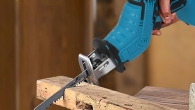

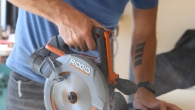
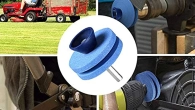

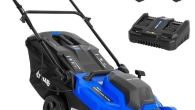
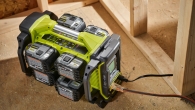

Leave a Reply